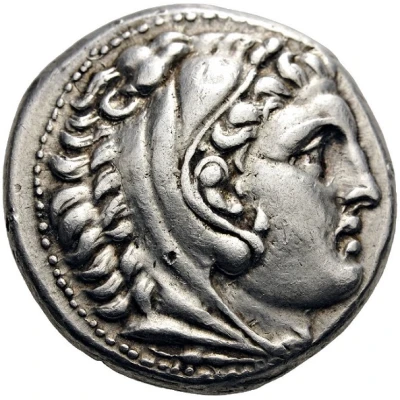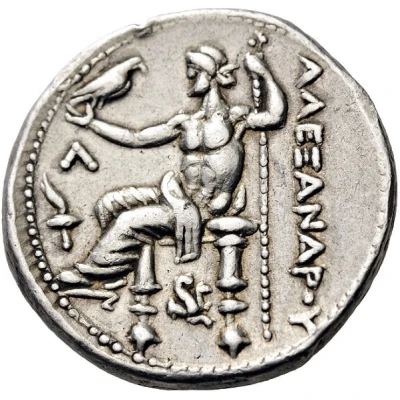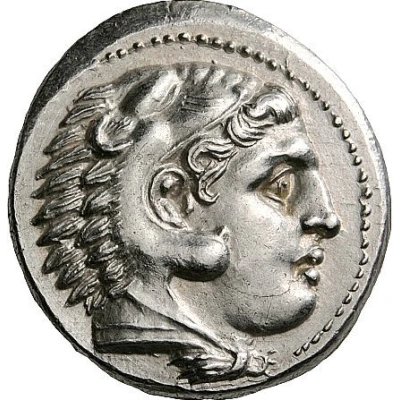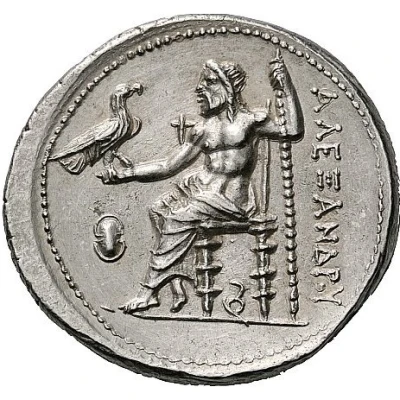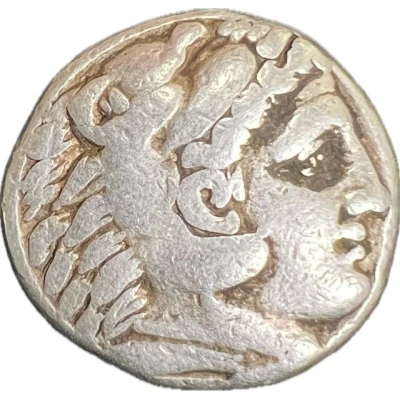
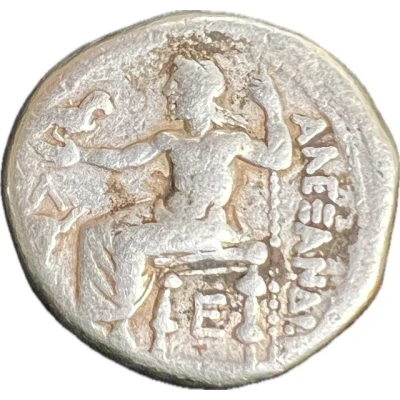

© J.C. Scherff (CC BY-SA)
Tetradrachm In the name of Alexander III;Amphipolis 315 BC - 294 BC
| Silver | 16.88 g | 25 mm |
| Issuer | Kingdom of Macedonia |
|---|---|
| Regent | Cassander (317 BC - 305 BC) |
| King | Philip IV (297 BC) Alexander V (297 BC - 294 BC) Antipater I (297 BC - 294 BC) |
| Type | Standard circulation coin |
| Years | 315 BC - 294 BC |
| Value | Tetradrachm (4) |
| Currency | Drachm |
| Composition | Silver |
| Weight | 16.88 g |
| Diameter | 25 mm |
| Shape | Round (irregular) |
| Technique | Hammered |
| Orientation | Variable alignment ↺ |
| Demonetized | Yes |
| Updated | 2024-10-10 |
| Numista | N#422000 |
|---|---|
| Rarity index | 97% |
Reverse
Zeus seated to left on backless throne, holding eagle in his right hand and long scepter in his left. To left, Λ above bucranium and below throne E
Script: Greek
Lettering:
AΛΕΞΑΝΔΡΟΥ
Λ
E
Translation: King Alexander (III, the Great)
Interesting fact
The Tetradrachm coin was issued during the reign of Alexander III, also known as Alexander the Great, who was the king of the ancient Greek kingdom of Macedonia. The coin features an image of Alexander's father, Philip II, on one side and an image of Athena, the Greek goddess of wisdom, on the other. This coin was used as a standard form of currency throughout the Macedonian Empire and was valued at four drachmas, which is where it gets its name "tetradrachm." It's interesting to note that the coin was made of silver, which was a valuable and widely used metal at the time. The weight of the coin, 16.88 grams, is also notable, as it suggests that the coin was made with a significant amount of silver. Overall, this coin is a fascinating piece of history that provides insight into the economy, culture, and politics of ancient Macedonia during the time of Alexander the Great.
